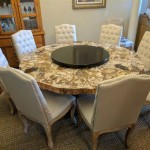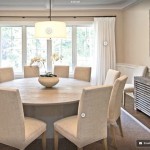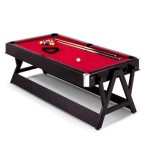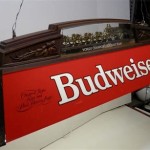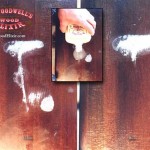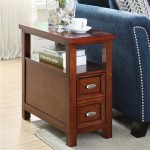Painted Kitchen Chairs and Tables: A Comprehensive Guide
Painted kitchen chairs and tables offer a versatile and cost-effective way to revitalize a kitchen space. The application of paint can transform dated furniture, introduce bold colors, or create a cohesive aesthetic that complements the overall design of the room. This article will explore the different aspects of painted kitchen chairs and tables, including preparation, painting techniques, paint types, and design considerations.
Furthermore, painted furniture allows for a personalized touch, reflecting individual style and preferences. Instead of purchasing new furniture, painting existing chairs and tables presents an environmentally conscious alternative, extending the lifespan of the pieces and reducing waste. The process, while requiring time and effort, is ultimately rewarding, resulting in unique and durable furniture pieces that enhance the functionality and visual appeal of the kitchen area.
Preparation: The Foundation for a Flawless Finish
Adequate preparation is paramount to achieving a professional and long-lasting paint finish on kitchen chairs and tables. This process involves cleaning, sanding, and priming the surfaces, ensuring proper adhesion and preventing common problems like chipping and peeling. Neglecting these steps can lead to unsatisfactory results and necessitate premature repainting.
The initial step is thorough cleaning. Remove any dirt, grease, or existing finishes using a degreasing cleaner and a scrub brush. This step is especially critical for kitchen furniture, which is often exposed to cooking splatters and spills. Residue left on the surface can impede paint adhesion and compromise the final appearance.
Following the cleaning, the surfaces must be sanded. Sanding creates a slightly rough texture, providing a better "key" for the paint to grip. The appropriate grit of sandpaper depends on the existing finish and the desired outcome. For glossy or varnished surfaces, start with a coarser grit (around 120-grit) to remove the sheen. Then, progress to a finer grit (around 220-grit) to smooth the surface. If the existing finish is already matte, a light sanding with 220-grit sandpaper may suffice.
After sanding, it's essential to remove all sanding dust with a tack cloth or a damp cloth. Dust particles can contaminate the paint finish and create an uneven texture. A clean, dust-free surface is crucial for optimal paint adhesion and a smooth final result.
The final preparation step is priming. Primer acts as a bonding agent between the furniture and the paint, ensuring long-lasting adhesion and preventing the paint from being absorbed into the wood. Choose a primer specifically designed for the type of paint being used. Applying two thin coats of primer is generally recommended, allowing each coat to dry completely before applying the next. The primer should dry fully before proceeding to the painting stage.
Paint Types and Application Techniques
Selecting the right type of paint is crucial for achieving the desired aesthetic and ensuring the durability of the painted kitchen chairs and tables. Different paint types offer varying levels of sheen, durability, and ease of application. Understanding the characteristics of each paint type is essential for making an informed decision.
Acrylic paint is a popular choice for furniture painting due to its water-based formula, low odor, and easy cleanup. Acrylic paint offers good adhesion, durability, and a wide range of colors. It is also relatively quick-drying, allowing for multiple coats to be applied in a shorter timeframe. Acrylic paints are suitable for both solid color finishes and decorative techniques.
Latex paint is another water-based option, known for its durability and resistance to fading. Latex paint offers excellent coverage and is available in a variety of sheens, from matte to high-gloss. It is also relatively scratch-resistant, making it a good choice for furniture that will be subject to frequent use. However, proper priming is essential to ensure good adhesion when using latex paint on furniture.
Oil-based paint offers superior durability and a harder finish compared to water-based paints. Oil-based paint is more resistant to scratches, chips, and staining, making it a good choice for high-traffic areas. However, oil-based paints have a strong odor, require longer drying times, and require mineral spirits for cleanup. Due to its environmental impact and the availability of high-quality water-based alternatives, oil-based paint is becoming less common for furniture painting.
The application technique can significantly impact the final appearance of the painted furniture. Brushing and rolling are the most common application methods. Brushing is suitable for intricate details and smaller areas, while rolling is more efficient for larger, flat surfaces. When brushing, use long, even strokes, following the grain of the wood. When rolling, use a smooth, even pressure to avoid creating bubbles or roller marks.
Spraying offers the most consistent and professional-looking finish. Spraying can be achieved using an aerosol can or a paint sprayer. Aerosol cans are convenient for small projects, while paint sprayers are more suitable for larger projects. When spraying, hold the can or sprayer approximately 10-12 inches from the surface and use a smooth, even motion. Multiple thin coats are better than one thick coat, preventing runs and drips.
Regardless of the application method, applying multiple thin coats of paint is crucial for achieving a smooth, even, and durable finish. Allow each coat to dry completely before applying the next. Lightly sand between coats with fine-grit sandpaper to remove any imperfections and create a smooth surface for the next coat of paint.
Design Considerations and Decorative Techniques
Beyond the practical aspects of preparation and painting, design considerations play a crucial role in creating visually appealing and aesthetically pleasing painted kitchen chairs and tables. The choice of color, finish, and decorative techniques can significantly impact the overall look and feel of the kitchen space.
Color selection is paramount. Consider the existing color scheme of the kitchen, including the walls, cabinets, and flooring. Choose colors that complement the existing palette and create a cohesive and harmonious look. Neutral colors, such as white, gray, and beige, are versatile and can be easily incorporated into various design styles. Bold colors, such as blues, greens, and reds, can add a pop of color and create a focal point.
Beyond solid colors, consider incorporating decorative techniques to add visual interest and personalize the furniture. Distressing involves intentionally removing some of the paint to reveal the underlying wood or previous paint layers, creating a vintage or rustic look. This can be achieved using sandpaper, a scraper, or a chemical stripper.
Stenciling involves using a stencil to create patterns or designs on the painted surface. Stencils can be used to apply intricate designs, lettering, or geometric patterns. This technique allows for a high degree of customization and can be used to create unique and personalized furniture pieces.
Decoupage involves gluing paper cutouts onto the painted surface and sealing them with a clear coat of varnish. This technique allows for incorporating images, patterns, or text into the furniture design. Decoupage can be used to create whimsical, eclectic, or personalized furniture pieces.
Antiquing involves applying a glaze or stain to the painted surface to create an aged or antique look. This technique adds depth and dimension to the paint finish and can be used to enhance the details of the furniture. Antiquing can be achieved using commercially available antiquing glazes or by creating a DIY glaze using paint and a thinning agent.
Finally, consider the finish. A matte finish provides a subtle, non-reflective look, while a satin finish offers a slight sheen. A semi-gloss finish is more durable and easier to clean, while a high-gloss finish provides a shiny, reflective surface. The choice of finish depends on the desired aesthetic and the level of durability required. Applying a clear coat of varnish or polyurethane over the painted surface can provide added protection and durability, especially for furniture that will be subject to frequent use.
By carefully considering these design elements and decorative techniques, one can transform ordinary kitchen chairs and tables into unique and personalized furniture pieces that enhance the beauty and functionality of the kitchen space.

How To Save Tired Dining Room Chairs With Chalk Paint Right Now

My Diy Thrifted Dining Table Chairs Makeover I Spy

Cottage Inspired Table And Chairs Confessions Of A Serial Do It Yourselfer

Dining Room Table And Chairs Makeover With Annie Sloan Chalk Paint

How To Spray Paint Dining Chairs Refresh Restyle

Antique Dining Table Updated With Chalk Paint Anderson Grant

Our Freshly Painted Dining Chairs Favorite Furniture Paint Sincerely Marie Designs

How To Update A Table With Chalk Paint I Dig Pinterest

Using Milk Paint On Free Dining Room Chairs Recreated Designs

How To Paint A Vintage Dining Table Bluesky At Home

